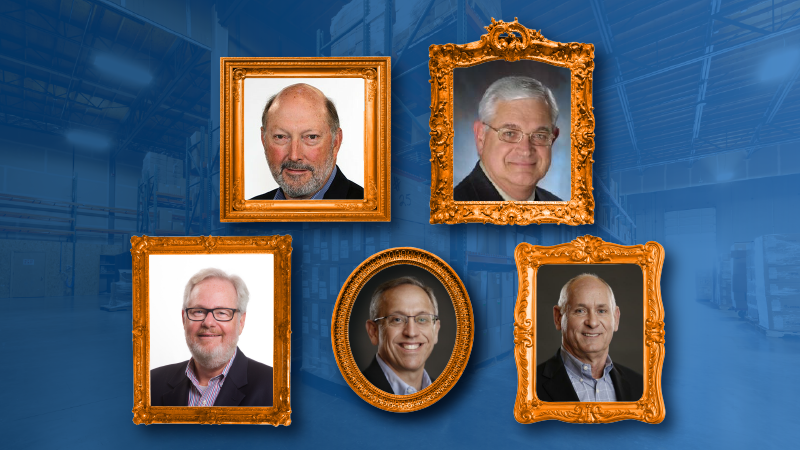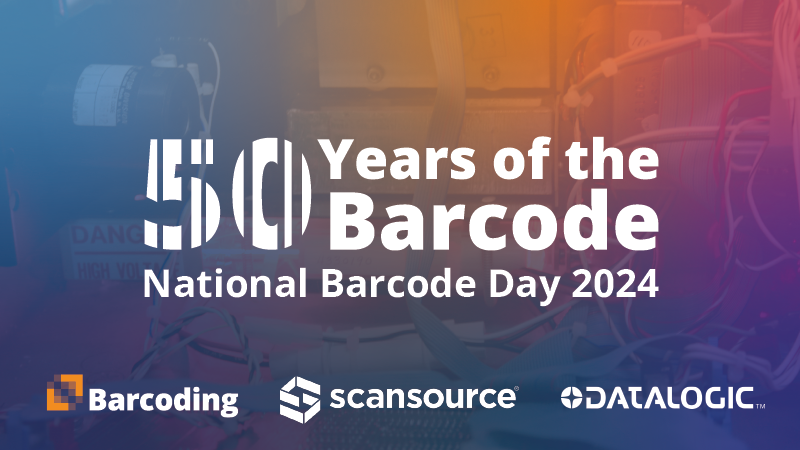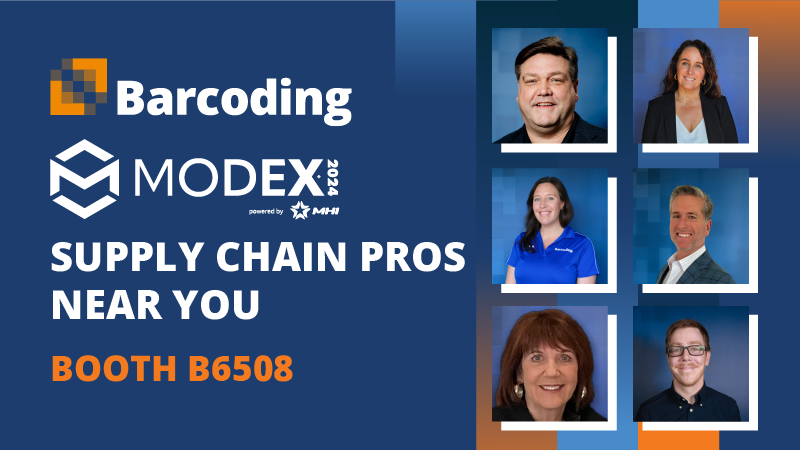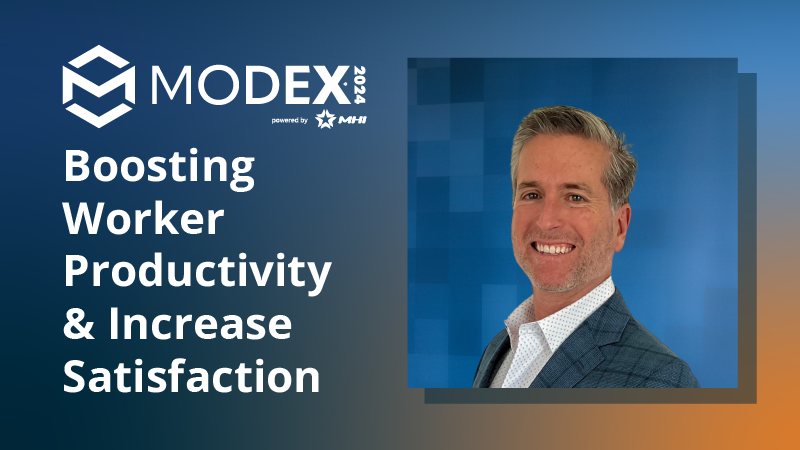If you’re lucky enough to talk with someone who’s spent a career in supply chain management, you’ll quickly learn it’s an industry in which the learning never stops. Those who stay on top embrace innovation and learn from the best.
And that’s why, for our December Huddle, we welcome five legendary #SupplyChainGeeks for a roundtable discussion on the history, current state, and future of automatic identification and data capture (AIDC) technologies, including:
- Radio frequency identification (RFID)
- Internet of Things (IoT)
- Mobility and end user enablement
- Automation and mechanization
- Systems integration
- Artificial intelligence (AI)
…and what it all means for you, your end users, and the industries you’re in.
Our wide-ranging conversation covered technological advances across multiple industries and guests’ hot takes on what’s ahead. But above all, we got some practical advice and best practices you can apply right away, straight from these truly legendary experts in supply-chain related technologies.
This is a video you won’t want to miss!
Get to Know 5 Legends of Supply Chain Automation
Our December Huddle panel boasts a stellar lineup: Jim Hilton, Frank Riso, Mark Wheeler, Michael Mears, and Ralph Lieberthal. Their diverse backgrounds span from pioneering barcode scanning in retail to leading advancements in RFID and AI technologies. Their shared experiences paint a vivid picture of the supply chain industry’s evolution and set the stage for a deep dive into the future.
Jim Hilton, whose career in supply chain began as a mobile end user in field operations, next taking on deployment as a customer. From there, he moved into software development for last mile operations—which were still manual back in the 1990s. Most recently, Jim joined the hardware side at Symbol/Motorola/Zebra Technologies, and his current work integrates all three aspects of his career experience: end user, provider, and hardware.
Frank Riso got his start in grocery, and implemented some of the first barcode scanning systems in stores in the 1970s before moving into retail automation. He spent years in software sales before joining what’s now Zebra, where he helped global retailers implement handheld computers. We have Frank’s enthusiasm for supply chain tech to thank for helping Barcoding establish National Barcode Day, and he’s also served as a representative at the National Retail Federation, and a volunteer for the Food Marketing Institute.
Mark Wheeler started in equipment engineering at IBM, designing, building, and deploying robotics. From there, he moved into systems integrations, which led to supply chain applications that ultimately included automated warehouse design and build projects. From there, Mark also joined the ranks at what’s now Zebra, supporting product marketing and sales as a subject matter expert. He currently consults on corporate strategy.
Michael Maris kicked off his career in warehouse operations with Meijer stores (back when there were fewer than 20 locations), and recalls fond memories of early automated order picking equipment and thermal labels. From there, Mike’s career took him on a path through software and into planning, manufacturing, and implementation of warehouse automation before also joining up with Symbol (now Zebra).
Ralph Lieberthal started in software at startup Rochelle International, which became the leader in vehicle routing optimization and scheduling, before he joined the manufacturing side with Symbol/Motorola/Zebra. Like his legendary colleagues, Ralph’s enthusiastic about automation and AI’s potential to help solve longstanding and emerging challenges across manufacturing and warehousing.
Looking Ahead, Plus Actionable Advice for Implementers & End Users
You’d be hard-pressed to find a more experienced, insightful “dream team” of industry veterans when it comes to technologies, integrations, and their real-world industrial applications. So let’s cut right to five predictions—and the panel’s best advice for successfully navigating the changes they see coming.
1. Legacy Systems and Connectivity Concerns
In an era increasingly defined by cloud computing and real-time data, legacy software and hardware raise concerns. These older systems weren’t designed for always-connected operations, and at this point often lack support. Now is a critical moment to take a hard look at current software and hardware, especially in operational environments where connectivity is crucial.
2. Reframing Investments in Technology
Another key insight is about return on technology investments, and how viewing a technology’s potential impact through a narrow lens can distort its ROI potential. This is especially true for RFID as companies move from pilots to full-scale implementations, where the challenge lies in ensuring the technology’s integrated effectively across the whole supply chain, rather than solely in isolated industry verticals. When businesses take a holistic approach to leveraging a powerful technology throughout and across the supply chain, they’re more likely to achieve ROI targets.
3. Technology to Address Labor Challenges
Evolving business models and a shrinking labor force are converging on companies of all sizes and industries. Tech advancements that can help improve operational speed, precision, and visibility can’t replace people, but they can help businesses optimize the employee experience and productivity of the people they have. Businesses will increase their use of mobility, end user enablement technologies like wearables, mechanized automation, and IoT-connected sensors to make work less physically demanding and more efficient.
4. RFID’s Role in Supporting Operational Excellence
It’s tough to overstate RFID’s proven benefits to supply chain management—or the breadth of those benefits, as it makes it possible to track products from their initial raw material state to the customer. The real-time visibility RFID enables can enhance productivity, partner communication, and customer satisfaction at every step. RFID’s demonstrated effectiveness and the operational advantages it can deliver make it a key technology to focus on today, while planning for tomorrow.
5. Choose Partners Who Care About Your Needs and Customer Experience
A deep understanding of your operations should be the first step any technology partner takes in helping you modernize. When you work with partners who take the time to understand your operations, they’ll be better equipped to help you select the solutions best suited to your business needs. Expect your integration partner to walk the floor, experience your work environment, witness your end users’ challenges firsthand. Let them get an honest, real look at the problems you face.
On the implementation end, demand more than a delivery of hardware and/or software. Training and ongoing support services ensure your solutions deliver the value—and ROI—you expect (and more). In industries with ongoing labor challenges, it’s even more important to make sure support and training are available for users.
Your Business Deserves More Than a Salesperson
All of our panelists would agree that technology purchases are major decisions that have the power to help your business compete, both now and in the future. So look for these qualities in a provider:
1. Experience and an understanding of your business. A quality partner should have deep experience in the field, but that’s not enough. Look for the humility and enthusiasm to get to know your business, your processes, and the people who’ll use the technology.
2. Support and training. You can buy hardware and software just about anywhere, but embracing accountability for making sure it works effectively separates vendors from partners.
3. Intellectual property and problem-solving skills. IP demonstrates a partner’s deep expertise to identify and solve problems that might not be apparent to others. This capability allows a trusted partner to spot issues and opportunities that a typical salesperson is likely to miss—and that adds major value to the partnership.
4. A “Goldilocks” approach to technology. It’s vital that a technology partner knows you well and cares about your business enough to recommend solutions that are manageable and appropriate for you and your teams, and your level of technological maturity. Look for a partner who’s need-focused, rather than pushing the latest trends or most advanced tech for its own sake.
5. A true partnership approach. Your relationship with a technology partner should be characterized by curiosity, a willingness to listen and learn, and the honesty to speak up when necessary. This kind of approach supports a relationship that’s not merely transactional, but is based on mutual growth and collaboration toward shared goals.
Your partner in tech solutions should be happy to share their expertise to help guide your team’s learning and decision-making. You can explore how RFID technology is transforming the supply chain and revolutionizing operations by downloading our detailed infographic, below.







